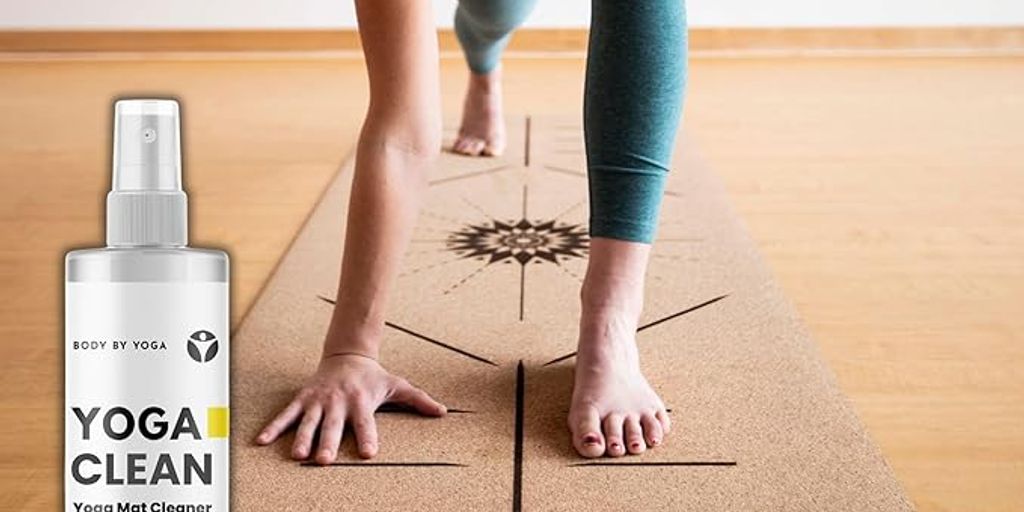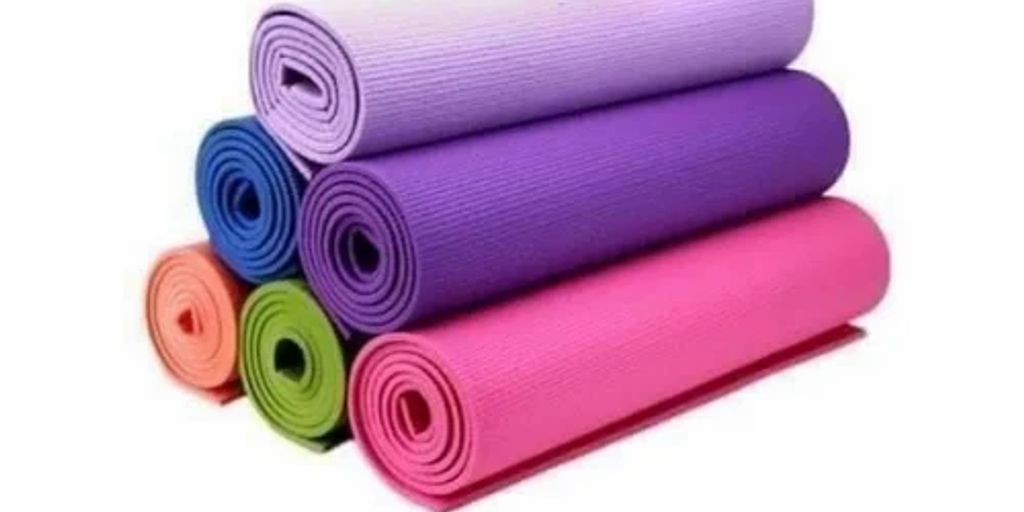
Choosing the Perfect Target Yoga Mat for Your Practice
Choosing the right yoga mat can make a big difference in your practice. With so many options available, it can be hard to decide which one is best for you. Target offers a wide range of yoga mats that cater to different needs and preferences. This guide will help you understand the different types of yoga mats, why you might want to choose a Target mat, and how to care for it. We'll also look at eco-friendly options and useful accessories to enhance your practice.
Key Takeaways
- Learn about the different materials, thicknesses, and textures of yoga mats to find the right one for your practice.
- Discover why Target yoga mats are a good choice for their affordability, variety, and quality.
- Match your yoga style with the perfect mat, whether you practice Hatha, Vinyasa, or Restorative yoga.
- Get tips on how to clean, maintain, and store your yoga mat to make it last longer.
- Explore eco-friendly yoga mat options and accessories that can enhance your yoga experience.
Understanding Different Types of Yoga Mats
Material Options
Yoga mats come in various materials, each offering unique benefits. PVC mats are durable and provide excellent grip, but they are not eco-friendly. TPE mats are a more environmentally friendly option, offering good traction and cushioning. Natural rubber mats are another popular choice, known for their excellent grip and eco-friendliness, though they can be heavier and have a distinct smell.
Thickness and Cushioning
The thickness of a yoga mat can greatly affect your comfort and stability during practice. Mats typically range from 1/16 inch to 1/4 inch thick. Thinner mats (1/16 inch) offer better stability and are great for balance poses, while thicker mats (1/4 inch) provide more cushioning, ideal for seated and supine poses. Choosing the right thickness depends on your personal comfort and the type of yoga you practice.
Texture and Grip
The texture of a yoga mat affects its grip and how much you slip during practice. Mats with a rough texture provide more traction, which can be beneficial for vigorous practices like Vinyasa or Power Yoga. Smooth mats, on the other hand, offer a softer feel but may require a towel to prevent slipping during sweaty sessions. Finding the right balance between texture and grip is key to a comfortable and safe practice.
A well-chosen yoga mat can significantly enhance your practice, providing the right balance of comfort, stability, and grip.
Why Choose a Target Yoga Mat
When it comes to yoga mats, Target offers a range of options that cater to different needs and preferences. Here are some reasons why you might consider choosing a Target yoga mat for your practice.
Affordability and Value
One of the main reasons to choose a Target yoga mat is the affordability. Target provides a variety of mats at different price points, making it easy to find one that fits your budget. Despite the lower cost, these mats often offer good quality and durability, ensuring you get value for your money.
Variety of Options
Target has a wide selection of yoga mats, from basic to premium options. Whether you need a mat for gentle Hatha yoga or intense Vinyasa sessions, you'll find something suitable. The variety ensures that you can find a mat that matches your specific needs and preferences.
Quality and Durability
Even though Target's yoga mats are affordable, they don't compromise on quality. Many of their mats are made from durable materials that can withstand regular use. Investing in a quality mat that will last is important, and Target's offerings often meet this criterion. This means you can enjoy your practice without worrying about wear and tear.
Choosing a Target yoga mat means you get a balance of affordability, variety, and quality, making it a smart choice for both beginners and experienced practitioners.
Matching Your Yoga Style with the Right Mat
Mats for Hatha Yoga
Hatha yoga is slow and focuses on basic poses. For this style, you need a mat with good cushioning to support your joints. A mat that is 5mm thick is a good choice. It provides comfort without being too soft.
Mats for Vinyasa and Power Yoga
Vinyasa and power yoga are more active and involve a lot of movement. Grip is very important for these styles to prevent slipping. Look for mats with a textured surface. A mat with a thickness of 3-4mm is ideal as it offers stability and balance.
Mats for Restorative and Yin Yoga
Restorative and Yin yoga are gentle and involve holding poses for a long time. A thicker mat, around 6mm, is best for these styles. It provides extra cushioning and comfort. This helps in staying relaxed during long poses.
Choosing the right mat for your yoga style can greatly enhance your practice. It’s important to consider the type of yoga you do most often when selecting a mat. This ensures you get the support and grip you need.
Caring for Your Target Yoga Mat
Cleaning and Maintenance Tips
Keeping your yoga mat clean is essential for both hygiene and longevity. Regular cleaning helps to remove sweat, dirt, and oils that can build up over time. Here are some simple steps to follow:
- After each practice, wipe down your mat with a damp cloth.
- For a deeper clean, mix a few drops of mild soap with water and gently scrub your mat.
- Rinse thoroughly and let it air dry completely before rolling it up.
Avoid using harsh chemicals as they can damage the mat's surface and reduce its grip.
Storage Solutions
Proper storage of your yoga mat can extend its life. When not in use, store your mat in a cool, dry place away from direct sunlight. Rolling your mat instead of folding it helps prevent creases and cracks. Consider using a mat bag or strap for easy transport and to keep it clean.
When to Replace Your Mat
Even with the best care, yoga mats don't last forever. Look for signs of wear and tear, such as thinning, flaking, or loss of grip. If your mat is no longer providing the support and cushioning you need, it might be time for a new one. For example, a 5mm kids yoga mat from Target offers ample support and cushioning, but over time, it will also need to be replaced.
Taking good care of your yoga mat ensures a safe and enjoyable practice every time.
Eco-Friendly and Sustainable Yoga Mats
Natural Material Choices
When choosing a yoga mat, it's important to consider eco-friendly options. Mats made from natural materials like rubber, jute, and cork are great choices. These materials are not only good for the environment but also provide excellent grip and comfort.
Recyclable and Biodegradable Options
Many yoga mats are now designed to be recyclable or biodegradable. This means that when your mat reaches the end of its life, it won't just sit in a landfill. Instead, it can be broken down naturally or recycled into new products. Choosing a mat that is recyclable or biodegradable is a great way to reduce your environmental footprint.
Brands Committed to Sustainability
Several brands are dedicated to making eco-friendly yoga mats. They use sustainable practices and materials to create their products. Some of these brands also give back to environmental causes, making it easy to support both your practice and the planet.
Finding a yoga mat that balances comfort, functionality, and aesthetics can enhance your yoga experience while also being kind to the Earth.
Enhancing Your Practice with Yoga Accessories
Yoga accessories can greatly improve your practice by providing extra support, comfort, and convenience. Here are some essential accessories to consider:
Yoga Blocks and Straps
Yoga blocks and straps are excellent tools for beginners and advanced practitioners alike. They help you achieve proper alignment and deepen your stretches. Blocks can be used to bring the floor closer to you, while straps can assist in reaching your feet or hands in challenging poses.
Mat Towels and Bags
Mat towels are perfect for those who sweat a lot during their practice. They absorb moisture and provide a non-slip surface, ensuring you stay safe and stable. Mat bags, on the other hand, make it easy to carry your mat to and from class, keeping it clean and protected.
Essential Oils and Sprays
Using essential oils and sprays can enhance your yoga experience by creating a calming atmosphere. Lavender and eucalyptus oils are popular choices for their relaxing and invigorating properties. Sprays can also be used to clean your mat, keeping it fresh and hygienic.
Adding the right accessories to your yoga practice can make a significant difference in your overall experience. They not only provide practical benefits but also help you connect more deeply with your body and mind.
Yoga accessories can make your practice more enjoyable and effective. From mats to straps, each item has a unique benefit. Ready to enhance your yoga sessions? Visit our website to explore our wide range of products.
Conclusion
Choosing the perfect yoga mat is a personal journey. It depends on your needs, preferences, and the type of yoga you practice. Remember to consider the mat's thickness, material, and grip. Also, think about your budget and how often you will use the mat. By keeping these factors in mind, you can find a mat that helps you enjoy your yoga practice and reach your goals. Happy practicing!
Frequently Asked Questions
What should I consider when choosing a yoga mat?
Think about the material, thickness, texture, and grip. Also, consider what type of yoga you practice and your personal needs.
How often should I clean my yoga mat?
It's a good idea to clean your yoga mat after every few uses. If you practice daily, consider cleaning it once a week.
Can I use a regular towel instead of a yoga mat towel?
While you can use a regular towel, a yoga mat towel is designed to fit your mat and provide better grip and absorption.
How do I store my yoga mat properly?
Store your yoga mat in a cool, dry place. Roll it up and avoid placing heavy objects on top of it to prevent damage.
When should I replace my yoga mat?
You should replace your yoga mat when it starts to wear out, loses its grip, or becomes too thin. This usually happens after about a year of regular use.
Are eco-friendly yoga mats worth the investment?
Yes, eco-friendly yoga mats are better for the environment. They are made from natural materials and are often more durable and safer for your health.


